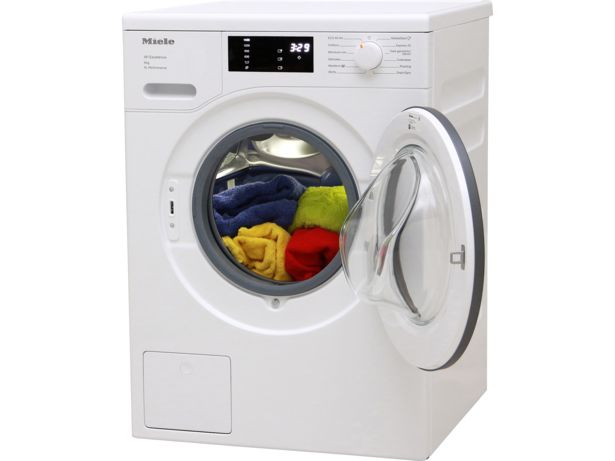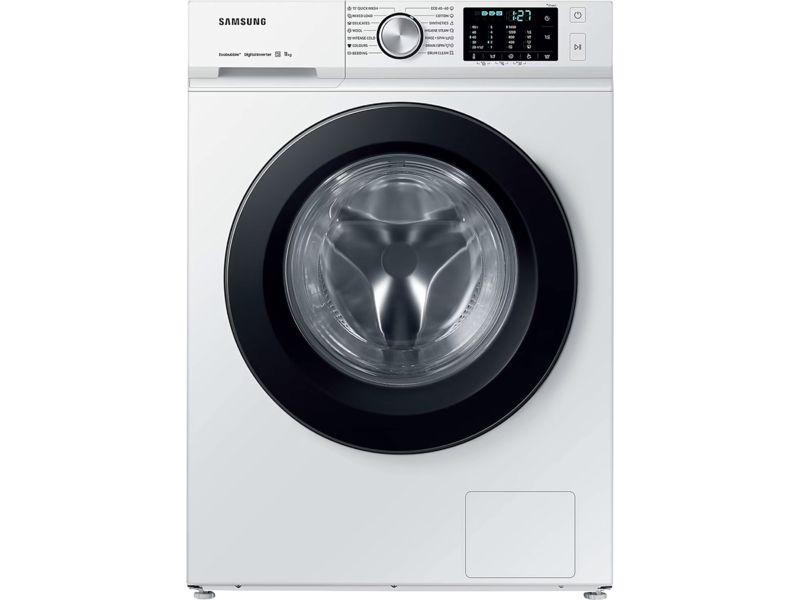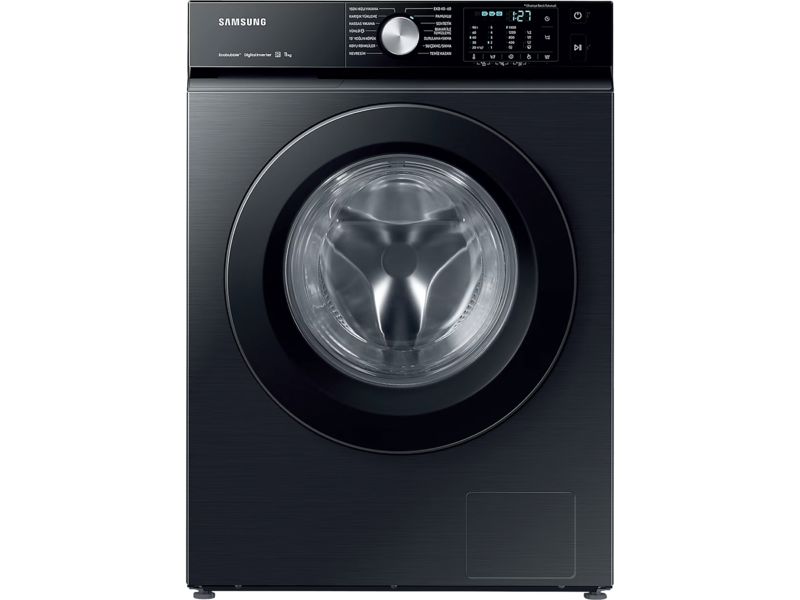How to design a utility room

In this article
- Why should you make space for a utility room?
- Utility room design ideas
- Make it for more than just laundry
- Where should you position your utility room?
- How big should a utility room be?
- Creating a utility room with existing space
- Small utility room ideas
- Can I stack a tumble dryer on top of my washing machine?
Whether you’re renovating your home, planning an extension or moving into a new property, considering adding a utility room is definitely worthwhile. Also known as a laundry room, it's the hub for many everyday tasks (not just doing the washing) – and if planned correctly it can be practical while looking great.
Beginning the process of creating your utility room can be daunting, especially if you’ve never had one before. Knowing where to place appliances, the amount of space you need and even in what area in the home it would work best, are all things you need to think over.
Our handy guide to designing your utility room will run you through all the basics, leaving you well on your way to designing your the laundry room of your dreams.
There’s no point designing the perfect utility room only to fill it with dud appliances. Take a look at the best washing machines from Which? reviews.
Be inspired to make home improvements. Sign up for our Home newsletter – it's free monthly
Why should you make space for a utility room?
The value of having a utility room goes further than mere practicality – it can also increase interest for potential buyers when you come to sell. Having an extra space to do your weekly washing and to store large appliances and cleaning products is a welcome addition to a family home.
Staying put? By moving the washing machine and tumble dryer into a utility room, you gain space in your kitchen for more storage or seating, while also eliminating a lot of the noisy appliances that might disrupt your family's cooking and eating time.
Fancy a kitchen makeover, too? Follow our simple kitchen design ideas to help transform your existing space.
Utility room design ideas
Make it for more than just laundry
The utility room will be the go-to area for all things laundry related. From washing and drying to steaming and ironing, the layout should focus on making these jobs as easy and enjoyable as possible.
However there are extra things that it can be used for, including:
- Larder
- Dog room
- Bike storage
- Coat and boot room
- Downstairs toilet
- Appliance room – somewhere to house the fridge, freezer and dishwasher
If you don't want to scrimp on your utility room makeover, save money on your energy bill instead. Discover the energy-saving washing machines that wash clothes well while keeping energy costs low.
Where should you position your utility room?
If you're extending your home, you should ideally choose a space near to the kitchen, with an external wall and direct access to the garden.
Doing your laundry next to – or at least close to – the kitchen makes sense for numerous reasons:
- Appliances should be easy to connect – you can use the same plumbing.
- You can gain space in your kitchen by moving the fridge and other large appliances into the utility room.
- If you’re doubling it up as a larder, you will want easy access while cooking.
Another logical option is near to a toilet or bathroom. Again, this will mean you can share plumbing connections and it should already be well ventilated.
Entering the laundry room through a back door is also very useful that way, you can remove coats and boots, store your bike and let the dog shake off its wet fur.
Being directly connected to the garden also allows for easy access to the washing line. You don’t want to spend your days lugging wet clothes through the house.
If the utility room will be solely used for laundry, try keeping the room separate from relaxing areas such as the lounge and the bedroom, to avoid being interrupted by noisy appliances.
We include a noise star rating for all the washing machines we review. The more stars, the quieter the machine will be. Check our washing machine reviews before buying.
How big should a utility room be?
The minimum size for a utility cupboard would be around 15 square feet. This would allow for a washing machine and a tumble dryer with shelving above, depending on the dimensions of your appliances.
A space of around 30 square feet would allow for a washing machine, a small amount of storage and a walkway. However the optimal space would be more like 50 square feet plus – this way you can include a sink and plenty of extra storage.
But the size really depends on your laundry needs and how many clothes you wash each week. Some people can make do with a large cupboard to store the washing machine and laundry accessories, while others need a large room with a variety of appliances, accessories and baskets.
Regardless of the size, make sure you measure the room and check it against the dimensions of your appliances. You don’t want to be left short of floor space because of your extra-large washing machine.
Find out the standard washing machine sizes in our expert buying guide.
Creating a utility room with existing space
If you don’t have the capacity to extend, there are usually other ways you can maximise existing space in your home.
Converting a garage is really common - it takes less time and money than an extension and is normally already in the perfect location; next to the kitchen with an external wall and door to the garden.
A cellar or a basement could also work well, but ventilation might be an issue. Be sure to check building regulations for any structural or electrical changes you plan to make to your home.
Always make sure of your appliance's warranty terms and conditions – housing your appliance in a garage or basement might invalidate it.
Small utility room ideas
Don't assume you can't have a utility room just because you have a smaller home. Make the most of your space using one of these solutions:
- Sharing the bathroom – If your downstairs bathroom is big enough, you could double it up as a mini laundry room. Hang storage on the walls and buy smaller appliances or a washer-dryer to maximise the efficiency of the room.
- Under the stairs – Leftover space under your staircase? Fitting a worktop lengthways and placing your washing machine and baskets underneath will leave you with a compact utility room. To keep it from ruining your hallway or lounge space, you could also fit a sliding door or panels in the front.
- Share the kitchen – If your kitchen has space to spare, why not think about partitioning off a section. This could be done using a stud wall or, if you’re not up for a DIY job, just buy a room separator.
- Take over a cupboard – If there's a cupboard in your home that's collecting dust, clear it out and move in the washing machine. Building stacked floating shelves above it will give you space for laundry, baskets and cleaning products.
Can I stack a tumble dryer on top of my washing machine?

If both your appliances are made by the same manufacturer, you should be able to buy a stacking kit to fix your dryer on top of your washing machine. These kits can be bought from manufacturers or department stores and are an alternative to a washer-dryer if you're short on space.
You can also buy universal stacking kits if you have a washer and dryer from two different brands. These kits are designed to fix any dryer on top of any front-loading washing machine, although a brand-specific kit may fix them more firmly.
It's not advisable to simply place a tumble dryer on top of your washing machine. Any jolts or the vibration of a high spin could dislodge the tumble dryer and cause damage.
Save space by combining your dryer and washer. We've highlighted the best washer-dryers from our independent reviews.
How to plan your utility room
Good planning is essential if you want to create a successful and hardworking utility room. Once you’ve made a decision on the size and location, you need to focus on the details:
Ventilation
Air circulation is vital. Heat and moisture are likely, so windows and doorways or extractor fans are important if you don’t want to end up with damp and mould on your walls.
If you have a vented tumble dryer, you will also need access to an external wall or window so that the hot air can be released out of the house via the hose.
Condenser tumble dryers can be installed anywhere in the home, so if being near an external wall or window isn't possible, there will still be a model for your home. Take a look at our tumble dryer reviews.
Flooring
Of course you want the flooring to look nice, but because of the continuous moisture that will be present and the risk of leaks, you need to think carefully about floor materials.
Carpets are a no-go, as leaks would ruin it quickly, dust and dirt will build up, and cleaning products can cause damage if spilt.
You should also avoid laminate. It might look great and be easy to clean, but if there is a leak then it will become damaged underneath and begin to warp.
Rubber flooring is a great option. It’s easy to wipe away grime, it’s naturally water resistant and it can even mask the vibration of a washing machine.
If rubber doesn’t go with the style of your home, try ceramic tiles. They're resistant to water and chemicals and look good. Just make sure the floor is level, as sitting a washing machine on a wonky floor will cause excess noise and potentially damage it.
If you’re extending your home, definitely consider underfloor heating, too. It will not only feel nice under your feet but it will help to tackle condensation and dry clothes more quickly. Without needing a radiator, you'll also end up with much more wall space.
Power sockets
Make sure your utility room has enough power sockets. Two will do for the washer and the dryer, but you don’t want to have to remove these to plug in the iron.
Four sockets is the minimum for a smaller utility room, but if you want to house the fridge, freezer and any other machines in there, you’ll need to add more.
Water inlets
If you’re extending your home, be sure to think about the extra water usage. The utility room will need to be able to support a washing machine and tumble dryer, sometimes simultaneously, plus a sink.
The plans should consider positioning, too – the sink should be near enough to the machines so that the plumbing can work in unison.
If you’re renovating, there might be limitations on the number of appliances that your existing plumbing can cater for, so it’s wise to speak to a professional before making big changes.
You can use our free Which? Trusted Traders service to find recommended plumbers and electricians who've been through our stringent vetting process.
Integrated or freestanding washing machine?
If you want to keep your appliances hidden from view, go for an integrated washing machine. Designed to sit within a unit and be covered with a door, integrated models cannot be left freestanding. These types of machines are typically more expensive to both buy and install.
If you’re happy for the washing machine to be on show, then go for a freestanding model. You will have more options to choose from, and they're cheaper to buy and simpler to install.
Sink
If you have the space, a sink is a useful addition. You can use it to clean and soak clothes, and to wash mucky hands or boots. Keep it close to the washing machine and ensure you have worktop space either side.
Opt for a deep sink if you can, as this will reduce splashing when you're hand-washing clothes.
Worktops
This room will take a lot of knocks, so choose low-maintenance, durable and water-resistant work surfaces such as:
- Granite – It looks great, is water resistant and durable, but it can be pricey.
- Hardwood – Iroko and teak hardwoods are water resistant, easy to fit and suit lots of different styles.
- Corian – It can be formed to fit any area, is perfect for wet rooms and comes in many different colours.
Positioning the worktops either side of the sink and above the washing machine will also make tasks easier.
Storage
Storage is very important – you don't want cleaning products, dirty clothes and muddy boots all dumped on the side while you pull out your clean clothes from the washing machine.
But it will all depend on space. If you have a large area to work with, try to include a variety of cupboards – small, low ones for products, and full-height ones for the ironing board.
Be sure to include a section for laundry baskets – ideally two or three, so you can separate colours and whites easily.
For a multi-functional utility room, coat racks, shoe boxes and a cupboard for pots and pans will help keep order.
If you’re tight for space, use the walls. Shelving and hanging baskets are great, while smaller tins or jars can be used to house pegs. Hooks are perfect for hanging bags, coats and towels, too.
Locks
Keep children and pets safe from harmful products by adding locks to the cupboards and/or placing harmful chemicals on high shelving.
Drying facilities
Living in the UK means that using the outdoor washing line is only possible for around four months of the year, so it’s essential you have a way to dry your clothes inside.
A tumble dryer or washer-dryer works for most items, but investing in a clothes horse and a retractable wall-to-wall clothes line will make sure you’ve got all bases covered. You can now buy heated clothes horses, too – this will help your washing dry quicker during the colder months.
Overhead airers are also perfect in rooms with high ceilings – you can dry clothes out of the way without using up floor space.
Not all tumble dryers are great at drying clothes. Quite a few of them dry loads unevenly or have dodgy sensors that mean clothes are left wet or dried to a crisp.
How much will it cost to create a utility room?
Extending and building a utility room from scratch will, of course, need a larger budget than converting a downstairs bathroom or the cupboard under the stairs. But there are plenty of ways you can cut costs whatever route you decide to take:
Using basic flat-pack shelving and storage units instead of having a fully fitted utility area will save you lots.
For example, you can buy basic storage units for less than £100 in Ikea – albeit for a small laundry space. And there are larger multi-section storage units for around £350. Homebase also offers cube storage shelves for less than £100.
Fitted units and worktops will typically cost more and take longer to fit. But the exact price will all depend on the size of the room and the materials you choose.
Other utility room money saving ideas include:
- Hooks instead of a coat rack.
- A café curtain instead of cupboard doors.
- Pull-out table stowed away in a drawer instead of long worktops.
- A large peg board across the wall to hang pots, utensils and the broom instead of built-in units.
- An over-the-door rack on the inside of the laundry room door instead of extra storage units.
Our tests have found that you don’t need to spend a fortune to get a Best Buy. Bag a bargain with our round-up of the best cheap washing machines





















